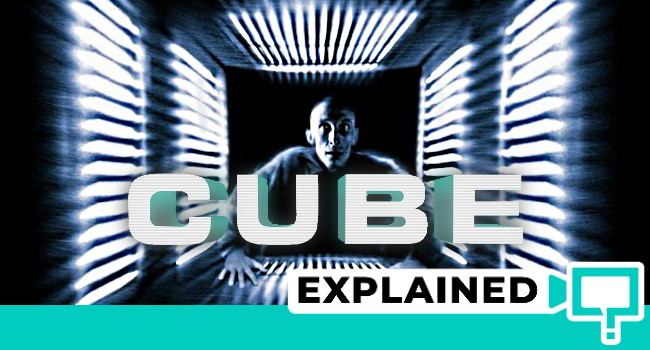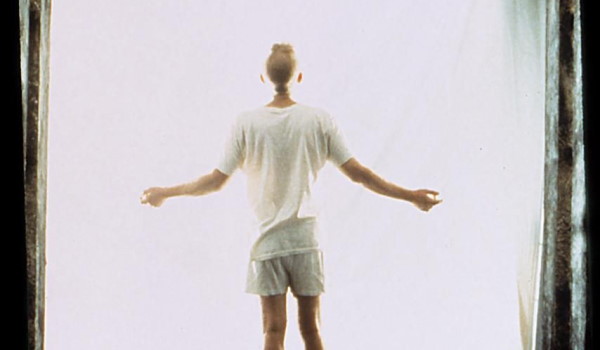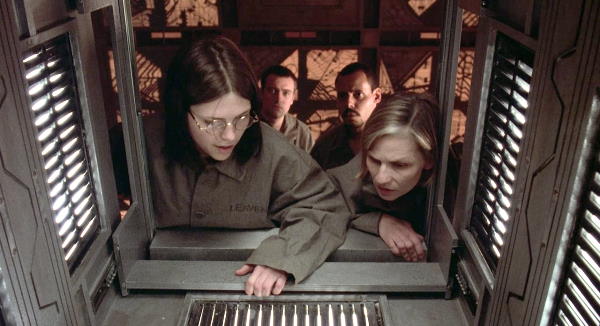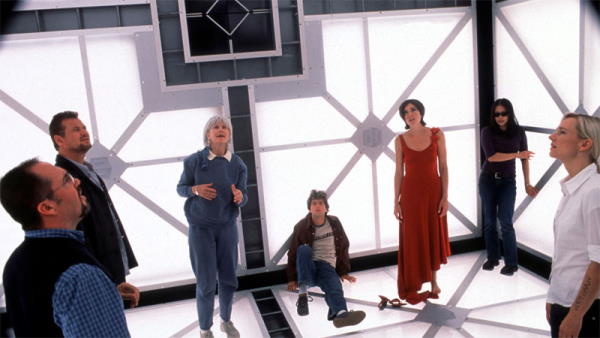When talking about revolutionary horror stories with a unique concept and a disappointing string of sequels, one just cannot avoid talking about the science-fiction thriller Cube. It’s a story about a group of people who wake up one day in an unknown, hostile setting, trying to use all the information and resources at their disposal to find the exit. While some people compare it to Saw, the similarities themselves are pretty superficial and have more of an aesthetic nature. Saw is primarily a story of revenge and redemption. In Cube, the emphasis is put on the social experiment in play. Without further ado, let’s see what Cube is about and why it can rightfully be seen as a masterclass in storytelling. Here’s the plot and ending of the movie Cube explained; spoilers ahead.
Hollywordle – Check out my new Hollywood Wordle game! Where To Watch? To find where to stream any movie or series based on your country, use This Is Barry’s Where To Watch. Oh, and if this article doesn’t answer all of your questions, drop me a comment or an FB chat message, and I’ll get you the answer. You can find other film explanations using the search option on top of the site.
Contents
Here are links to the key aspects of the movie:
Cube Movie: Plot Explained In Short
A group of survivors wakes up in a maze consisting of 14×14 feet large, cube-shaped rooms. Each room is marked by a number, and some of the rooms are equipped with deadly traps. The prisoners don’t know how or why they reached that cubical room or that it is a maze.
The group tries to look for answers, developing their theories as to why they’re there and where they are. Except for Worth, who participated in constructing the outer shell of the Cube but knew nothing past his part of the job, everyone else seems to be selected semi-randomly.
One clear thing is that they’re selected based on their archetypes, personalities, and talents, which strongly indicates that some sort of twisted experiment, like in the movie Circle, is actually at play.
Being put to the test in a real-life environment ensures they learn quickly and on their feet. That and use every last shred of their potential in this pursuit. It’s a similar concept to how, in a traditional learning environment, a student can never progress as fast as with a cleverly-put community outreach program. Learning and seeing an example is just more efficient.
It doesn’t take long until the group starts turning on each other, and in the end, a mentally challenged member of the group is the only survivor who manages to leave the place.
Cube Movie: Ending Explained
The ending of the movie Cube shows us that had the group done nothing and waited long enough, they would have all been free and unharmed. The first Cube moved between the maze’s exit and interior sections.
But humans aren’t built that way. We must solve when faced with a problem. If you think about it, human intelligence can sometimes be viewed as the curse that, as a collective species, drives us towards our own extinction.
Cube Movie: Characters
Now, regardless of what you think about the story itself, the storytelling is spot on. It’s like someone read an incredibly elaborate book of all the dos and don’ts of narration, character development, and story progression and did their best not to miss a simple thing.
Character Names in Cube
First of all, the characters’ names start with different letters. We have Quentin (Q), Leaven (L), Holloway (H), Rennes (R), Worth (W), and Kazan (K). This way, it’s easy to avoid confusing the audience with so many similar names (we’re looking at you, GRR Martin).
Not only that, the characters are named after famous prisons, thus signifying that their imprisonment in the Cube might have been predetermined. If anything, this ties in quite nicely with Quentin’s theory of it all being organized for someone’s sick entertainment. Quentin is named after San Quentin. Leaven and Worth, put together, represent Leavenworth. Holloway is named after a known women’s prison in the U.K., while Rennes and Kazan are the locations of notorious penitentiaries in France and Russia, respectively.
Characterization and Development
Their theories of the Cube’s purpose play a key role in character reveal. Holloway, for instance, is quick to believe that it’s a government conspiracy, while Quentin immediately suspects psychopathic fantasies of a magnate are at play. Worth’s nihilistic outlook on life is revealed through his theory that it’s all just chaotic and ungoverned (perhaps even ungovernable).
It also shows how different characters transform under pressure. For instance, while Quentin seems the most courageous at the start, he succumbs to panic and paranoia rather quickly. In the end, a person who initially seemed like a natural leader turns out to be a burden. Ironically, Kazan, who initially did look like a burden, turned out to be their best shot at getting out.
This is the author’s take on the fight, flight or freeze response to critical situations. Worth, for instance, is a nihilist. However, when put on the spot, he turns into both a protector and a survivalist (even though it takes him a bit to develop in this direction).
Each character represents an archetype, and the number of available characters is just enough for the story to work. There’s also minimum carnage and gore, and it’s all for storytelling purposes.
The death of Alderson at the very start is there, as a perfect example of show-do-not-tell, to inform us that the place is dangerous, indeed. Rennes is killed so early on for two reasons. First, to avoid the group using him as a crutch, how he’s the most qualified to deal with the situation at hand. Had Rennes not been killed, Leaven might have stayed quiet for the rest of the movie. Second, it shows us that survivability or skill alone is not a free ticket for getting out of the Cube.
Cube Movie: Narration
Fog Of War
The narration is so brilliant that the viewer feels trapped inside the Cube too. You have no idea which room is rigged (same as them). An average viewer doesn’t understand the X, Y, and Z coordination or the derived equations, no more than Quentin, Holloway, and Worth do, which makes us dependent on Leaven to break it down and puts us in the same spot as the other characters. We find out if the room is a trap at the same time as they.
Internal Logical Consistency
The location of the “bridge” (exit) is also quite logical when one’s using Occam’s Razor (a principle that claims that the most obvious solution is often the most logical). Why did they start near the entrance? When you observe from the logistical standpoint, someone (an employee behind the management of the maze/cube) had to carry them inside. If the rooms in the cube move on their own, then there’s no point in why the protagonists would have to be carried particularly deep into the cube. Someone could have just left them near the entrance and then relied on them (and the cube motion itself) to distribute them deeper and deeper (which is exactly what happened).
We Learn As They Do
Most importantly, the characters are imperfect, and their knowledge, like the viewer’s knowledge of the nature of the Cube, expands as the movie progresses. Initially, they make mistakes, as they make conclusions based on false assumptions and incomplete information.
The real antagonist in the movie Cube
The Cube movie’s message is also quite powerful, and it is delivered quite subtly to the viewer. When you start doing the math, you’ll stumble upon the realization that Quentin killed more people than the Cube. The Cube killed 2 (Rennes and Alderson), while Quentin killed 3 (Leaven, Holloway, and Worth) before getting killed by Worth himself. In other words, no matter how hostile the conditions, the biggest threat to social groups often comes from the members themselves. The conditions, no matter how hostile, are something that one can adjust to.
Cube Movie: In Conclusion
Ultimately, this movie doesn’t answer all the questions the audience has. Who built the Cube? Why was it made? However, this was never the point. First of all, in life, you never get all the answers you seek, and neither do the prisoners. Second, the experiment itself, a deeper look into human nature, and the atmosphere in the movie is that of fear and being in the dark about what’s going on. It’s as if the viewer themselves is trapped in the cube with the protagonists.

Stacey is a talented freelance writer passionate about all things pop culture. She has a keen eye for detail and a natural talent for storytelling. She’s a super-fan of Game of Thrones, Cats, and Indie Rock Music and can often be found engrossed in complex films and books. Connect with her on her social media handles to learn more about her work and interests.




